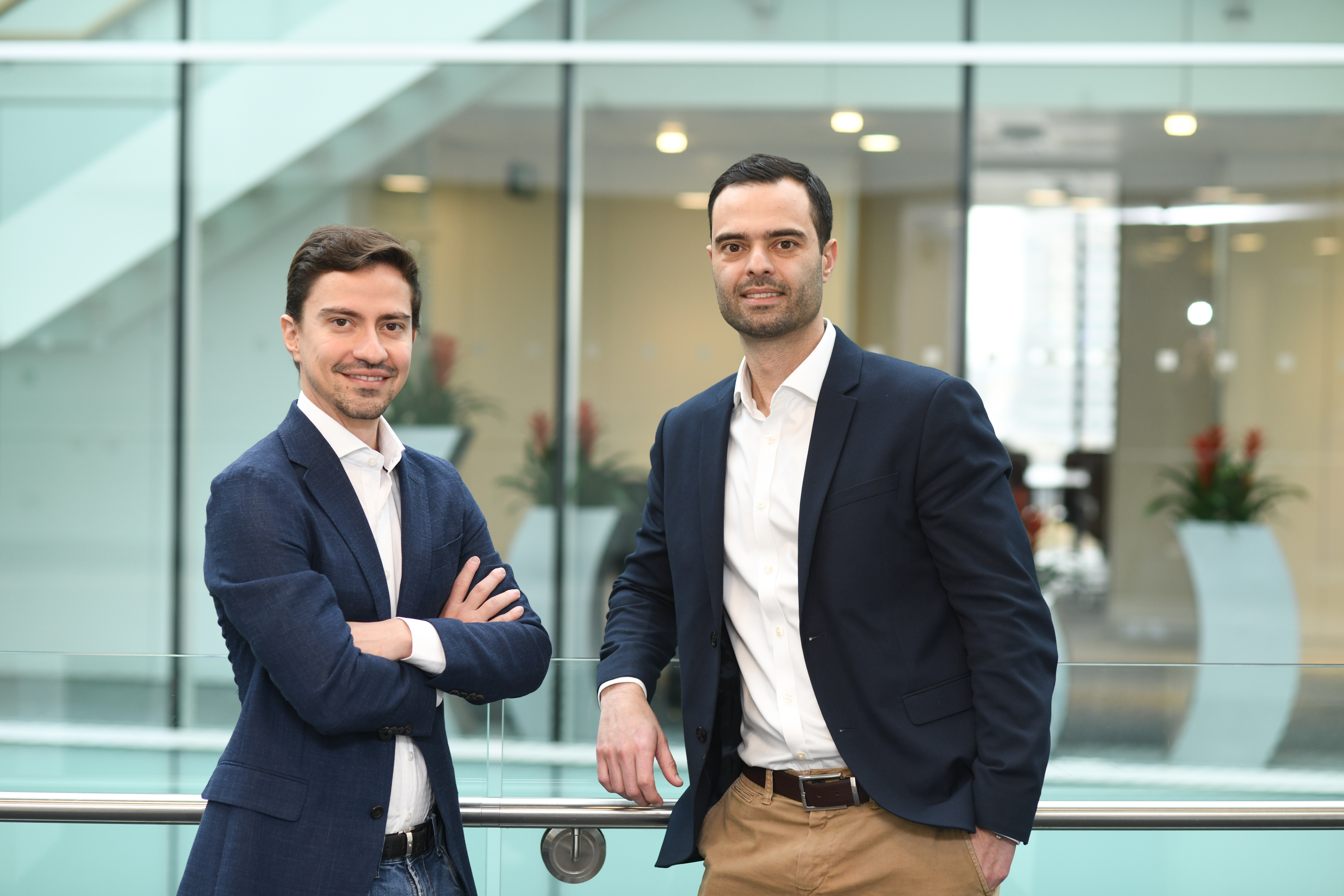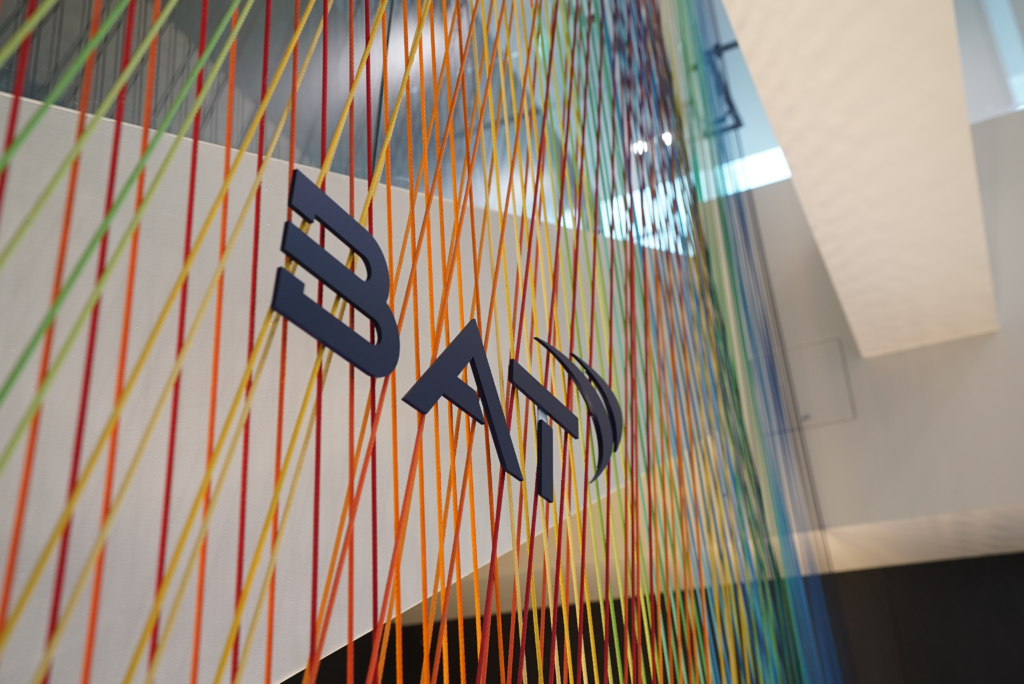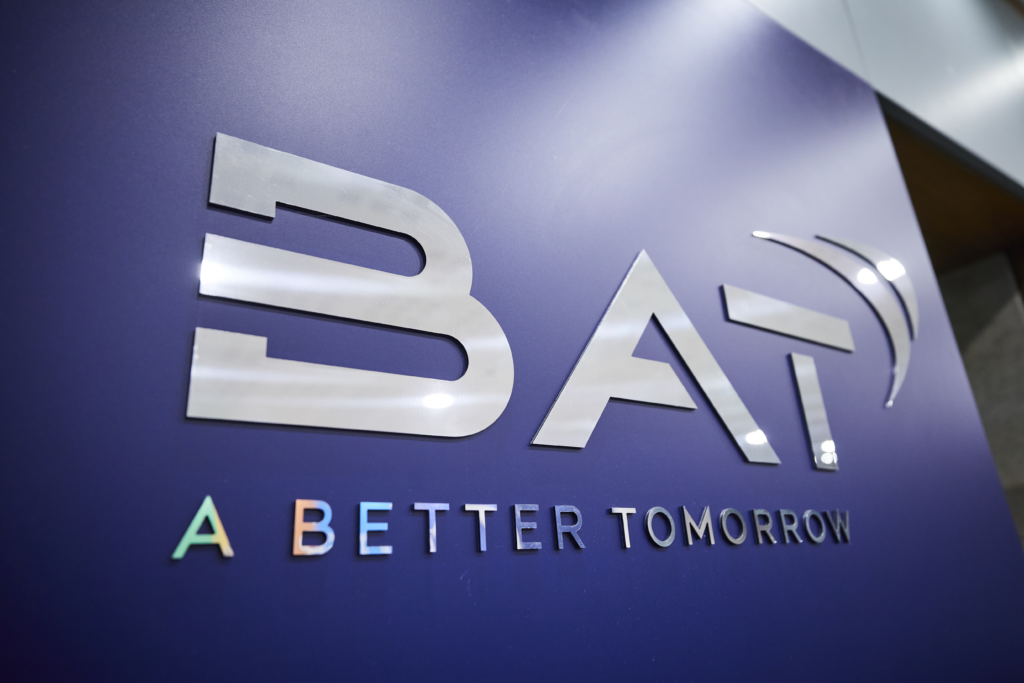As Head of Procurement Excellence at a global business like BAT, Eduardo Chrispim’s primary objective is to execute transformative strategies to help overcome the challenges of a “polycrisis” world. Alongside Procurement Business Manager, Directs Europe, Rony Moura, he explains how this transformation is taking shape and what the company’s future procurement landscape will look like. An innovative Supplier Relationship Management (SRM) strategy is setting the tone for a better tomorrow.
Hi Eduardo. The best place to start would be to explain this volatile procurement landscape that you’re operating in; and what you mean by a “polycrisis” world?
In the current post-pandemic environment, a “polycrisis” world doesn’t merely express the coexistence of multiple crises; it highlights the fact that the combined impact of these crises is more dangerous than the individual components. In the realm of procurement, we are confronted with a multitude of challenges stemming from these converging global issues which include the escalation of geopolitical tensions, economic turbulence marked by inflation and high interest rates, an environmental crisis with climate change, and perhaps the most pronounced talent shortage. All these factors bring serious challenges – and opportunities – to us as a procurement function.
As BAT is a global business operating in approximately 180 countries, we have a highly complex and interconnected supply chain and therefore we are exposed to all those risks. Our function, as a bridge to the external world through our value chain, deals with these factors on a daily basis. Our effectiveness in responding swiftly, maintaining the highest standards of integrity, and equipping ourselves with comprehensive market intelligence is paramount to preserving our value proposition.
Furthermore, within the unique context of BAT’s transformation into new business segments, most notably with our new categories that venture into uncharted territories, we are aware of the need to swiftly acquire and deploy fresh capabilities, expertise and innovation. In this regard, our suppliers emerge as pivotal partners in this transformative journey. Consequently, we have invested significantly in strengthening our Supplier Relationship Management (SRM) processes to foster collaborative evolution with our suppliers. This strategic approach ensures that we remain agile and responsive to the evolving landscape, enabling us to seamlessly adapt and thrive in our new and diverse business landscape.
Digital Brochure: click below to view the magazine version of this content
Please build on this approach to continuous improvement, with SRM as a flagship strategy and investment…
We have deliberately placed our people and our suppliers at the forefront of our strategy. We recognise that our success as a business is intrinsically tied to the strength of our partnerships with these crucial stakeholders. In today’s dynamic business landscape, forging collaborative supplier relationships is paramount, particularly in areas such as innovation and sustainability. We firmly believe that by nurturing these strategic alliances, we boost our capacity to drive positive change, ensuring a sustainable and innovative path forward for both our business and the broader procurement ecosystem.
For example, we have developed a holistic environmental management framework which is built into our SRM model. This includes upskilling the procurement function and suppliers on their ability to execute against an ESG framework, digitalising elements of the ESG SRM programme, and continuously improving our data quality by working with a first-party data provider. We are pleased with the positive feedback we have received from suppliers regarding our clear communication of expectations, and our proven commitment to supporting their capability uplift.
Starting well ahead of our 2030 target has given suppliers the time to plan and implement what is expected within a reasonable timeframe, and our openness of approach has been commented on repeatedly, with suppliers pleased at our transparency around current capability and gaps. Our offer to build capability and identify opportunities together has been widely adopted and enjoyed.

Eduardo Chrispim – Head or Procurement Excellence & Rony Moura – Procurement Business Manager Directs Europe
Bringing Rony into the conversation, how would you perceive the impact of this dynamic approach to supplier relations?
Simply, SRM is very important to us. The outdated “one-way” interaction, where customers simply conveyed their demands for suppliers to execute, has proved insufficient for industry leaders seeking to excel in today’s dynamic, fast-paced and highly competitive environment.
Our suppliers are experts in what they do and can bring significant capabilities for innovation and value generation to our consumers. It is our responsibility to create a forward-thinking, innovative environment where both parties collaborate seamlessly towards a joint vision of exceeding consumer expectations.
Additionally, the boundaries of our relationships with suppliers have expanded well beyond traditional confines. We witness a pivotal shift where sustainability is not merely our corporate responsibility towards society but has become a compelling and attractive factor that we cannot afford to overlook, and cannot be reached without collaborating with our suppliers.
More broadly, our most ambitious objectives must encourage ownership at supplier level, and the traditional approach of focusing on tracking performance, while still fundamental, is no longer sufficient for success. We recognise the importance of nurturing collaboration across procurement, our entire organisation, and our suppliers; and the vital role these relationships play.
You seem to have a clear vision for what supplier relationships should look like now. How does the introduction of new technologies augment, or maybe even add complexity to, this strategy?
More data has been generated in the past two years than throughout the rest of the history of humankind. This obviously needs managing and harnessing. However, a common mistake I see from many organisations is the urge to invest in digitalisation without a clear vision focused on value generation. The challenge of transforming data into information to support decision-making should be addressed without amplifying digital complexity and, even worse, digital isolation. Every new software should be implemented as part of a bigger strategy of simplification and every solution, including artificial intelligence, should serve as a business enabler rather than as an endgame.
Digital Transformation in a supply chain context is only whole when it encompasses processes end-to-end, from suppliers to points of sales. Our digital strategy at BAT is based on this premise, as a never-ending journey towards digital excellence. To this end, functional platforms have been designed to allow data integration; cross-functional systems have become key elements to our ways of working; and our strategic suppliers have now joined the party to unlock the missing parts for complete end-to-end collaboration.
Having a clear digital transformation strategy enables specific technologies to hit their mark. To that end, are there any solutions in particular that you feel epitomise this approach, Rony?
In the context of our SRM2.0 strategy, the system we chose to improve performance, unlock innovative solutions and enhance sustainability with our strategic partners is the Vizibl Platform. It is a web-page platform live 24-seven, connecting the whole business and suppliers at all times, in all locations.
The importance of such collaborative platforms cannot be underestimated. I frequently use the “small drop in a lake that creates many ripples” analogy to explain what happens on a daily basis with business decisions, where each one can trigger a chain reaction of effects. Those effects could represent risks but might also create positive waves of transformation. By having such collaborative workspaces, like we do with Vizibl, where selected cross-functional metrics are visible to everyone, actions are categorised and jointly tracked, supplier-led innovation is stimulated, and potential “ripple effects” of decision-making are closely monitored.
Vizibl continues to support our strategy of creating a fast-paced decision-making environment that will eventually strengthen our relationship with our suppliers and ultimately deliver benefits to consumers.
And of course, any successful digital transformation must also incorporate the human element?
Absolutely – it is pivotal. Rather than fearing the revolutionary technology before us, we should embrace this transformation and ensure our workforce is equipped with the skills and knowledge needed to effectively navigate and leverage the digital landscape.
Significant efforts have already been undertaken in upskilling the workforce and will continue to be a central part of our strategy. We firmly believe in our people as fundamental pillars of our growth. As I consistently emphasise, technology is an enabler, but we are the ones leading this journey with our vision, ambitions and unwavering commitment to building a better tomorrow. This goes for our employees, our society and our consumers.
People empowerment, aligned with people diversity, is resulting in the most powerful transformation in our generation. Disruptive technologies are not only new to the world but for the first time they are also accessible to everyone. Having a truly diverse and empowered workforce is essential because all points of view are relevant. Inclusivity ensures that our innovation is well-rounded, responsive, and capable of addressing a broader range of perspectives and needs.
I’m proud to say that in our company we have a mix of 138 nationalities in our management team. That’s a lot of different backgrounds, and it’s awesome! We love this diversity because it sparks new ideas, creativity, and different ways of looking at things. Our workplace is like a global melting pot, where you get to collaborate with people from all over the world, each with their own culture and perspective. It’s pretty cool, and it’s something that I really appreciate.
In a nutshell, what makes BAT special is our belief in the power of diversity and our commitment to a better tomorrow, we cherish all the different voices and ideas that make us who we are.
SRM Transformation Partner – Vizibl
Back to you, Eduardo, and moving the discussion on to a different form of social responsibility: what has been BAT’s approach to environmental sustainability throughout this SRM transformation?
BAT’s declared target of a 50 percent absolute reduction across all three scopes of carbon emissions by 2030 is a particular challenge for our procurement function, given that almost half of total emissions arises from purchased goods and services. Without significant progress in this area, the BAT business will struggle to achieve its business-wide emissions targets.
BAT procurement has also assumed a higher proportion of responsibility for these business-wide emissions targets, making the function’s commitments even more ambitious.
Needing to get off the ground quickly and look for areas of opportunity while defining the ways of working in parallel, we created a Supplier Engagement Framework for emissions that was effective, efficient, and easily deployable across the entire procurement organisation.
The development of this framework consisted of five key steps:
- Defining the scope of the decarbonisation framework by assessing the state of play in regard to scope 3 emissions in the BAT organisation, and selecting metrics to monitor areas of impact.
- Baseline assessment of our suppliers’ capability through CDP submissions and direct conversations, allowing us to appraise the environmental impact of each supplier and tailor our engagement approach on a case-by-case basis.
- Working closely with higher impact suppliers to drive collaboration and stress test the effectiveness of our framework, to drive the right behaviours and actions.
- Enhancing the environmental focus of our procurement standards, particularly regarding RFx, to ensure that ESG is front and centre.
- Embedding the framework into activities through internal capability building, digital supplier management solutions, and continuous improvement of emissions data. This includes upskilling the procurement function on their ability to execute against the now-proven framework, and optimising accordingly.
I understand that ‘building a better tomorrow’ is more than just a soundbite?
Indeed, it is a motto and a purpose. Our Sustainability Agenda is an integral part of BAT’s strategy and purpose to build A Better Tomorrow™. It reflects our commitment to reducing the health impact of our business as our principal focus area, while achieving excellence across environmental, social and governance (ESG) matters relevant to our business.
BAT’s publicly stated aim is to progressively transform our portfolio by actively encouraging adult smokers to switch to less risky products compared to smoking; a transformation delivering long-term multi-stakeholder value.
To illustrate the extent of our ESG efforts, we should mention that, group-wide, we have more than 30,000 direct materials and indirect service suppliers. We estimate around 50 percent of our direct and indirect supplier emissions can be attributed to 60 suppliers. By engaging with these suppliers through data collection, information sharing, direct discussions and asking them to participate in the CDP Supply Chain Programme, we are focusing on areas where we believe we can make the biggest impact. The next phase is to extend the programme to the second tier of suppliers, contributing to over 80% of emissions. This approach is integrated into our revamped SRM model. Our goal is to have 20 percent of suppliers of purchased goods and services setting science-based targets by 2025.

Looking forward, how would you now define the overall culture at BAT, incorporating these transformative efforts around ESG, diversity and supplier management?
We are becoming a business that defines itself not by the product it sells, but by the consumer needs it meets. We are creating the brands of the future – brands with purpose. By driving value from our combustibles business – and simplifying our organisation – we will accelerate this ambitious transformation.
The BAT of tomorrow will be a high-growth consumer goods company: global, consumer-centric, multi-category, with sustainability at its core. Procurement plays a pivotal role in not only delivering traditional key performance indicators such as savings, budget control, and cash flow optimisation, but also in actively contributing to revenue generation. As BAT embarks on its journey into new categories, our suppliers will become indispensable partners, driving customer-centric and forward-thinking innovations that underpin our business’s evolution.
We recognise the imperative of nurturing long-term and strategic supplier partnerships. We place emphasis on innovation, sustainability and risk management as critical pillars in our supplier development programmes. This holistic approach ensures that our suppliers become integral contributors to our ongoing transformation, working seamlessly alongside our procurement teams.
Innovation seems key in every facet – something I also understand you’ve been rewarded for?
At the heart of our procurement culture lies this relentless commitment to innovation, epitomised most strongly in recent times by our approach to supplier management. Our pioneering SRM programme is founded on the principles of data and technology, and it has been instrumental in promoting robust supplier collaboration amid the challenges presented by the post-pandemic macroeconomic landscape.
Our innovative “SRM 2.0” strategy has been recognised on multiple occasions, including being shortlisted for two prestigious procurement awards. It was designed to foster ‘customer of choice’ partnerships with our key strategic suppliers across all BAT geographies and categories. It allowed us to identify, develop, and deploy winning products in a faster, more streamlined, standardised, and collaborative manner. Through this platform, these suppliers now have continuous access to performance metrics, sustainability plans and product ideation functionality. They can engage around-the-clock on tasks, documents and project health checks, all from a centralised location.
It perfectly demonstrates our transition into a data-driven function, continuously evolving our technologies and tools to harness comprehensive and insightful data, enabling us to make precise decisions.
We are committed to building a procurement function comprised of innovation champions who are digitally fluent, collaborative, agile and adaptable professionals. They are advocates for sustainability, making commercial decisions with a purpose. This collective vision of the BAT procurement team ensures we are fully aligned with the organisation’s transformation into a high-growth, consumer-centric and globally sustainable enterprise.
We’re coming to the end of 2023 now, so what’s in store for 2024 and beyond, given the progress that has already been made, and also in the context of a “polycrisis” world?
As we look ahead to 2024, BAT remains committed to building on this strong foundation by extending coverage to further suppliers. This expansion will enable us to further drive governance and performance management, while also focusing on innovation development, risk management and sustainability.
More broadly, I would say the future of procurement is bright, even in the midst of a volatile macro-environment marked by what can only be described as a polycrisis. While the short-term may remain challenging, we’ve demonstrated our value and resilience over the past decade, and now it’s on us to continue building on these successes as we confront new challenges that lie ahead.
Procurement’s evolution points to a more strategic, sustainable, responsible and ethical future. As we recognise the escalating challenges, whether due to trade wars, expanding legislation, or macroeconomics, we are aware of the role responsible sourcing can play in bringing resilience and future-proofing to our organisation. Responsible sourcing creates shared value, not only for BAT and its customers but also for the environment and society as a whole.
Digital transformation goes hand-in-hand with this, but it’s essential to recognise that behind every digital transformation, it’s our people who will make the real difference. Developing our talent, fostering a shared vision, and ensuring their active participation in this transformative journey are integral to our future success.
In essence, we are on a journey to shape a procurement landscape that not only meets the demands of today, but also anticipates and addresses the needs of tomorrow.


